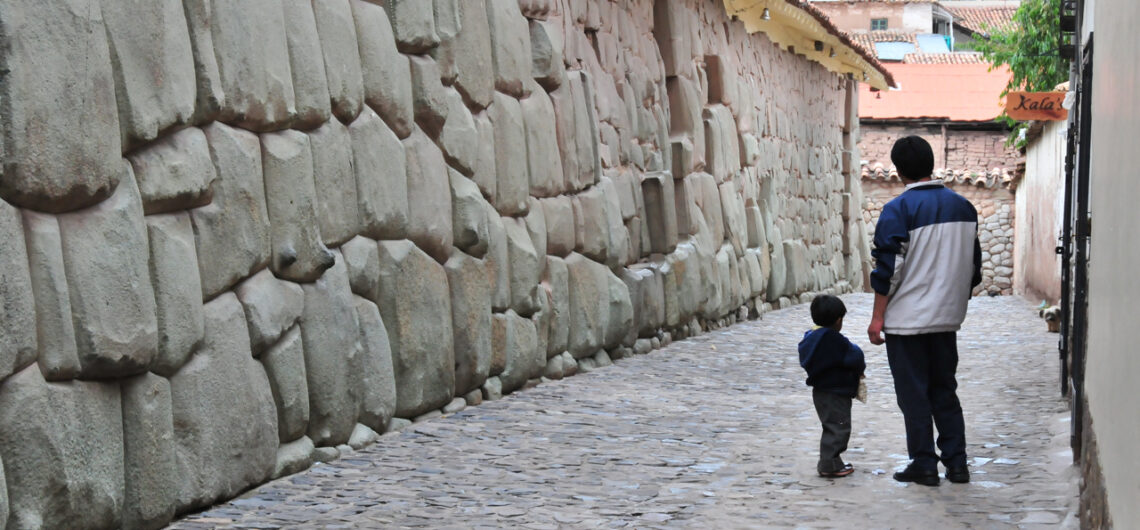Cusco is a hybrid city, with Incan and Spanish colonial history constantly coming into contact and mixing in truly unique ways. One way in which the Incan legacy of Cusco pushes through the cracks of the Spanish colonial sheen is with the Inca walls that are scattered throughout the city, structures so strong and masterfully crafted that they have endured for centures.
Cusco City: Inca Walls
If you walk southeast away from the Plaza de Armas along the narrow alley of Loreto, there are Inca walls on both sides. Each side has its own significance to the ancient culture. The wall on the right-hand side belongs to Amarucancha, or the ‘Courtyard of the Serpents.’ Its haunting name derives from the pair of snakes carved at the lintel of the doorway near the end of the enclosure. Amarucancha marks the site of the palace of the 11th Inca, Huayna Capac, and the church of La Compañía was built here after the Conquest. There is now a school behind the church, and behind the school is a popular tourist market. On the other side of Loreto is the oldest-surviving Inca wall in Cusco. The wall belonged to the Acllahuasi, or the ‘House of the Chosen Women.’ After the Conquest, the building became part of the closed convent of Santa Catalina and switched from housing the Virgins of the Sun to housing pious Catholic nuns.
Heading northeast away from the Plaza de Armas along Calle Triunfo, you soon come to the street of Hatunrumiyoc, named after the well-known 12-sided stone. The stone is on the right, about halfway along the second city block, recognizable by the small knot of Indians selling souvenirs next to it. The stone belongs to a wall of the palace of the sixth Inca, Inca Roca. It is a brilliant display of a technique known as polygonal masonry.
There is great difference between the wall of Hatunrumiyoc and that of the Acllahuasi. The first is made of polygonal stone blocks in no regular pattern, while the second is made from rectangular blocks layered like modern-day bricks. Both styles are common in Inca architecture, but, in general, the polygonal masonry was thought to be stronger and was thus used for retaining walls in terraces. The coursed masonry was considered more aesthetically appealing, so the Inca used it for the walls of Inca temples and palaces.
If you want to see the incredible Inca walls and everything else that Cusco has to offer, contact us at travel@aracari.com.

